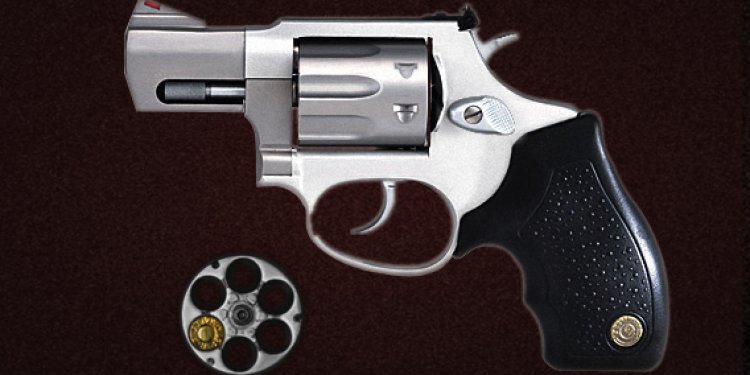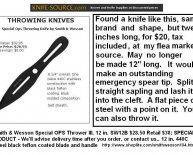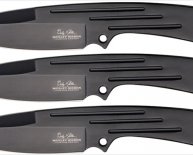
Famous Pistols
Handheld firearms have always carried some obvious advantages. In the early days, it would be much easier to handle a horse if you only needed one hand to accurately use your weapon. Other markets for them include women who want to remain fashionable while having a defense mechanism, or assassins who want to mask their intent. The biggest driver of innovation, however, is the need for police, the military, hunters, and criminals alike to have a method of taking someone or something down at close range.
As a result, there has always been a market for pistols. In order to satisfy this market, innovation has been constant since the introduction of the hand cannon by the Chinese in 1365. In those days, you would touch a match cord through a hole and fire off a round—literally a hand cannon. That's much different than some modern pistols today where you load a magazine, chamber a round, and have 15+ shots at your disposal.
The following seven models made significant strides in achieving what we take for granted today. In doing so, they've carved out legendary places in history.
#7: Browning Hi-Power
The Browning HP carries the name of one of the most legendary weapon designers of all time, John Browning. It is undoubtedly worthy of his name, but perhaps in a perfect world more credit would go to another accomplished weapons designer—Dieudonné Saive—who completed Browning's original design a few years after his death (just in time for WWII).
The Hi-Power, although initially rejected by France, forever influenced the way pistols would be made because of its staggered 13-round magazine. Previous attempts at high-capacity magazines were often too bulky, heavy, or unreliable to be practical. You might assume that this pistol would be especially high powered, but it shot 9 mm ammo at a pedestrian velocity.
The pistol was widely used by the British and the Germans during WWII (since the primary Allied factory was in Belgium, it wasn't long before the Germans were capable of producing them). The Browning HP gained notoriety with British airborne units late in the war, and by the end of the WWII it had a great reputation. As a result, 93 nations would adopt it as a standard service pistol.
Modern pistol designs have eclipsed the single action Browning HP in many ways, but it took them a long time to do it (and the staggered magazine is likely to stick around for ages).
#6: Walther P .38
Quite a few modern pistols have adopted the stacked magazine of the Browning HP, but they've also almost all adopted the double/single action of the Walther P.38 (named because it was adopted by the German army in 1938). The legacy of this mechanism alone makes the Walther worthy of this list.
Double/single action seems like a confusing term. How can something be both double and single of anything? In truth, it's simply a hybrid between two previous popular designs. Single action pistols require the user to cock back the hammer before pulling the trigger. The trigger pull does the single action of releasing the hammer, which strikes the firing pin, which causes the bullet cartridge to explode and propel the bullet forward. Some semi-automatic pistols allow the recoil of the previous round to re-cock the hammer, so that you only have to pull back the hammer on the first round. Double action pistols don't require manually pulling the hammer, the trigger both pulls back the hammer and releases it. The drawback is that the trigger pull is probably stiffer and longer, and this feature can cost both accuracy and fractions of a second.
The P.38, assuming a magazine was loaded and a round was chambered, used double action on the first shot. The recoil from that shot would cock the hammer, and it used a single action to release the hammer on the rest of the magazine. This hybrid mechanism was an improvement over either of its predecessors.
The P.38 held a satisfactory eight 9mm Parabellum rounds. It was very much ahead of its time when it was adopted, and it remained in military and police service into the 2000's.
#5: Glock 17
Continuing with our theme of trendsetting pistols, the Glock 17 set a trend that is likely to be around for a long time. In 1980, the Austrian military asked for pistol candidates to replace none other than their aging Walther P.38s. Gaston Glock, as you would expect, was a curtain rod engineer. Although he didn't have experience with pistols, he had all the skills he really needed: experience with polymers, and an open mind. It was probably inevitable that polymers would be used in guns, but in 1980 they were still pretty new. Glock assembled a group of military, police, and civilian sport shooters to help him come up with a prototype.
As a result of this consultation, the Glock 17 (the 17th version to come up within the company) lacked any real weaknesses. It was high capacity, very reliable, lightweight, inexpensive, safe, and easy to manufacture because it didn't have many parts. All of these features shocked the established companies (FN Herstal, SIG, H&K, Beretta, Steyr): the Glock 17 outperformed all of them.
The Glock pistol would only take a few years to integrate into the international market. There was some backlash, especially in the United States, by traditionalists who preferred the ol' six shootin' revolvers. Admittedly, the Glock isn't a super-pretty gun. Now, however, it commands about 65% of the market share of U.S. law enforcement pistols.
#4: Luger
Although the first three entries have been trendsetters, this is a "Most Iconic" list and not a "Trendsetters" list. The Luger was very much both. The Luger was initially developed in 1898, and as an 8-round 9-mm semi-automatic pistol it was way ahead of its time. 9 mm rounds had never been used before the Luger, though ultimately they would become the most popular pistol caliber. Also, smokeless powder allowed semi-auto pistols like the Luger to flourish. Black powder, its predecessor, had a horrible smell, gave away your position, and fouled easily. A semi-automatic 9 mm is still essentially what most modern pistols are (although many peripheral improvements have been made).
The Luger is different than most semi-automatic pistols because it features a nifty jointed arm rather than a slide. The jointed arm gives it a unique look which added to its notoriety. Very much a German weapon, it was used in the service of the German Empire in WWI, and often used by German officers in WWII, thus Allied soldiers would try to take them home as trophies and sell them. This avarice was so prevalent that Germans would try and booby-trap Lugers in places Allied soldiers would find them.


















